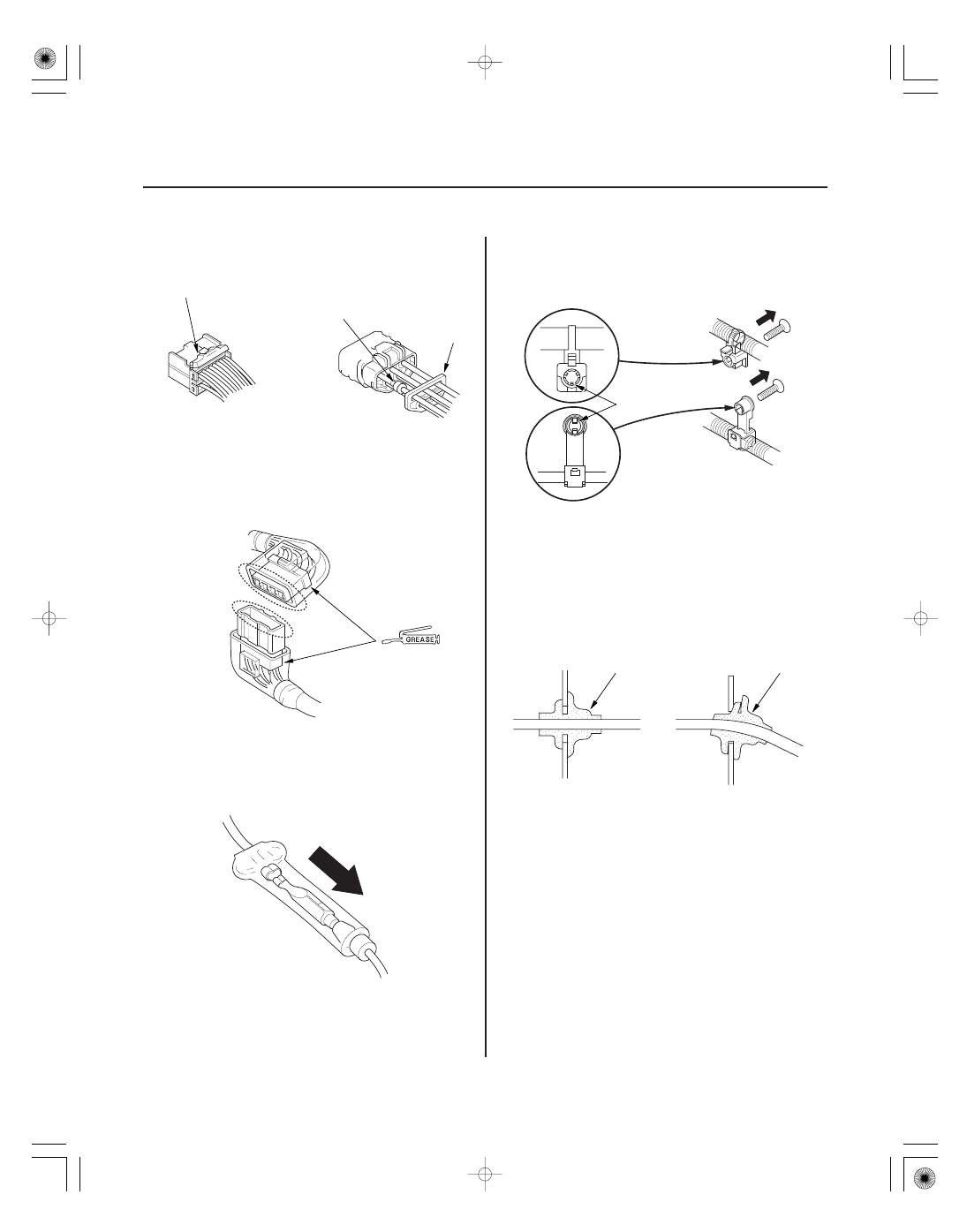Honda Ridgeline. Manual - part 427

05
06
07
08
10
Handling Wires and Harnesses
22-4
Body Electrical
General Troubleshooting Information (cont’d)
A
B
A
(P/N 08798-9001)
DOWN
A
A
B
• Check for loose retainer (A) and rubber seals (B).
• The backs of some connectors are packed with
dielectric grease. Add grease if necessary. If the
grease is contaminated, replace it.
• Insert the connector all the way and make sure it is
securely locked.
• Position wires so that the open end of the cover faces
down.
• Secure wires and wire harnesses to the frame with
their respective wire ties at the designated locations.
• Remove clips carefully; don’t damage their locks (A).
• After installing harness clips, make sure the harness
doesn’t interfere with any moving parts.
• Keep wire harnesses away from exhaust components
and other hot parts, from sharp edges of brackets and
holes, and from exposed screws and bolts.
• Seat grommets in their grooves properly (A). Do not
leave grommets distorted (B).